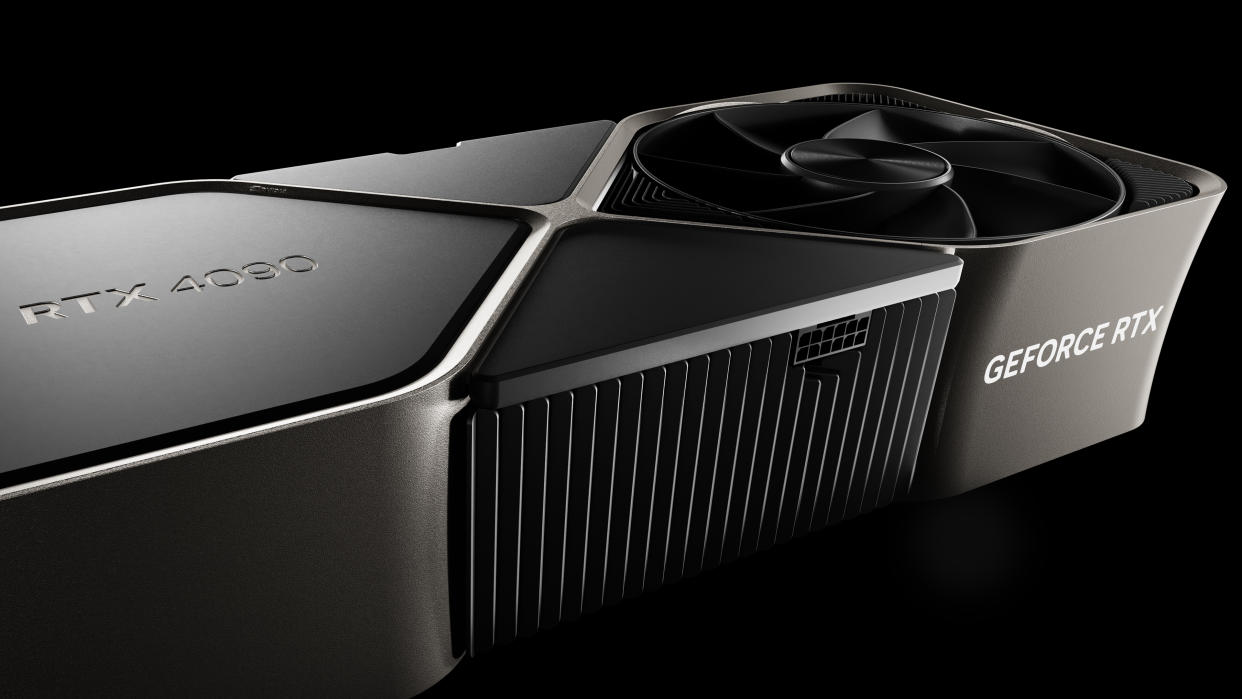Nvidia Reportedly Cancels RTX 4090 Ti, Plans 512-bit Bus Next-Gen Flagship

It seems that gamers still hoping to get into the RTX 40-series bandwagon will have to be content with the RTX 4090 GPU as the halo product of this generation. That's according to the typically thrustworthy leaker Kopite7kimi, who reported via Twitter that internal Nvidia plans to launch a refreshed flagship — let's call it the RTX 4090 Ti — have been canceled.
The rumor comes as the one-year anniversary of the RTX 4090's announcement (originally in September 2022) is fast approaching. Through recent years, Nvidia has been building out its product stack with mid-generation refreshes that not only add the "Ti" moniker, but also offer performance step-ups to better round-out the company's lineup against AMD's comparable competition. Nvidia has already launched some Ti models (namely the RTX 4060 Ti and the RTX 4070 Ti), but that strategy doesn't seem to be happening on the upper ladders of Nvidia's product stack anymore.
I'm afraid there won't be RTX 4090 Ti anymore. Some low-grade AD103 and AD106 chips will be another versions of RTX 4070 and 4060.July 27, 2023
There may be a few reasons for this. The main reason likely has to do with competition (or the lack thereof). Once again, AMD decided not to go after the performance crown; the RX 7900 XTX, while a great card that's frequently at the top of our list of the best graphics cards, is more of a direct competitor to the RTX 4080. Nvidia still has the halo product and the brownie points that brings, so why spend more money in bringing yet another SKU to market?
Of course, there's an argument that NVIDIA must be sitting on at least some number of fully-functioning AD-102 chips, but those bring less of a profit than a comparable professional accelerator (such as the Nvidia L40 or others). There's also the question of power consumption, and with the 16-pin meltdown controversy still not fully put to bed, the potential for issues with a 600W RTX 4090 Ti certainly exist.
There's also the fact that sales of graphics cards and PC components are slumping badly right now. With the previous generation RTX 30-series cards, Nvidia introduced the RTX 3080 Ti and RTX 3070 Ti less than a year after the initial launch, with an RTX 3090 Ti arriving in April 2022. The first two were commercially successful, due to the unprecedented demand. The last? Not so much. If Nvidia doesn't do a mid-cycle refresh for the RTX 40-series, that speaks volumes about how many cards are sitting on shelves.
Kopite7kimi added that while plans for Ti versions of Nvidia's top-performing cards are out of the deck, there's still a plan to optimize production silicon by introducing further products onto the stack. According to the leaker, though, these are being geared more toward the Chinese market and should fit in Nvidia's lineup as variations of the RTX 4060 and 4070 based on the AD103 and AD106 chips. If this pans out, it seems both AMD and Nvidia are willing to make specific GPUs to cater to the (admittedly immense) Chinese market.
Combined with multiple sources, I confirm the gaming flagship of Ada-next will have a 512-bit memory interface.July 27, 2023
As an added bonus, Kopite7kimi also mentioned that multiple industry sources have confirmed that the next-generation Nvidia flagship (let's call it the RTX 5090) will feature a 512-bit memory interface. If true, this marks the first time since the GTX 280 and GTX 285 days — all the way back in 2008/2009! — that Nvidia has used a 512-bit bus width.
Of course, that doesn't include dual-GPU cards, like the Titan Z with a 2 x 384-bit bus. Or there was also the GTX 295 with a dual 448-bit interface. The last mainstream consumer GPU with a 512-bit bus (not counting HBM/HBM2 solutions) were AMD's R9 390/390X (which were basically tuned variants of the earlier R9 290/290X). Regardless, most graphics cards on the market instead use a simpler, and less expensive, 256-bit bus. Top models may go as wide as a 384-bit interface, which is still enough to offer bandwidth of around 1 TB/s mark when paired with the appropriate VRAM tech (GDDR6X or GDDR6).
Companies usually prefer to add memory bandwidth by adopting newer (and faster) memory tech rather than by increasing the bus depth, due to the lower developmental and manufacturing costs incurred. And with Nvidia being expected to introduce its RTX 5000 series by 2025, it's theoretically possible that the company might be looking to pair its next product family with GDDR7 memory.
At a maximum throughput of 32 Gbps, a 512-bit bus width would translate into 2 TB/s throughput — double that of the RTX 4090. Considering how even $1,500 cards are nowadays insufficient to run the latest games at full settings and native resolution (looking at you, Remnant II), there may be something to that idea. With 2GB memory chips, a 512-bit interface would also translate to 32GB of VRAM total on such a GPU, or potentially even 64GB and 128GB professional versions with 4GB chips.
Again, everything we're saying here stems from Kopite7kimi's tweets. While they're generally correct, this isn't the same as an official confirmation. Product roadmaps can and will change. Maybe Nvidia will ultimately decide to launch a new Titan RTX based on AD102, maybe it won't. So do your best "salt bae" impersonation with regards to the RTX 4090 Ti and future RTX 5090 rumors.

